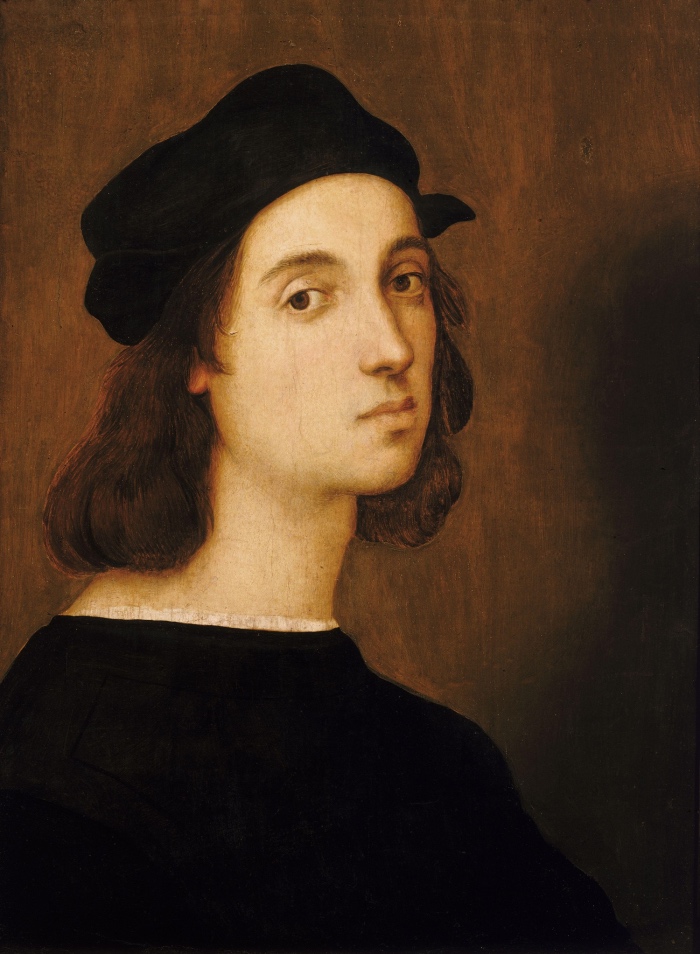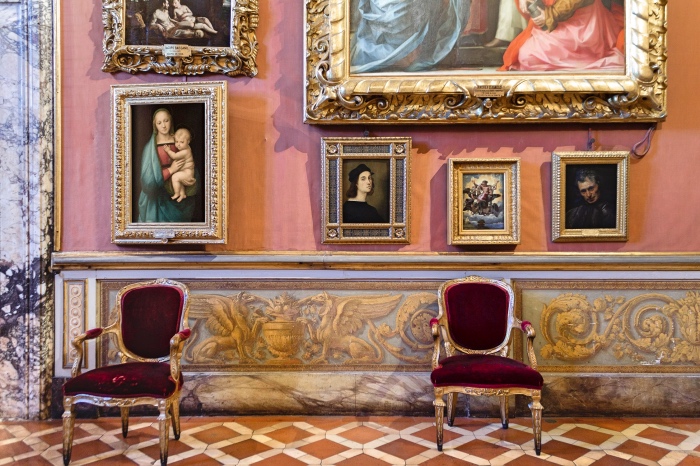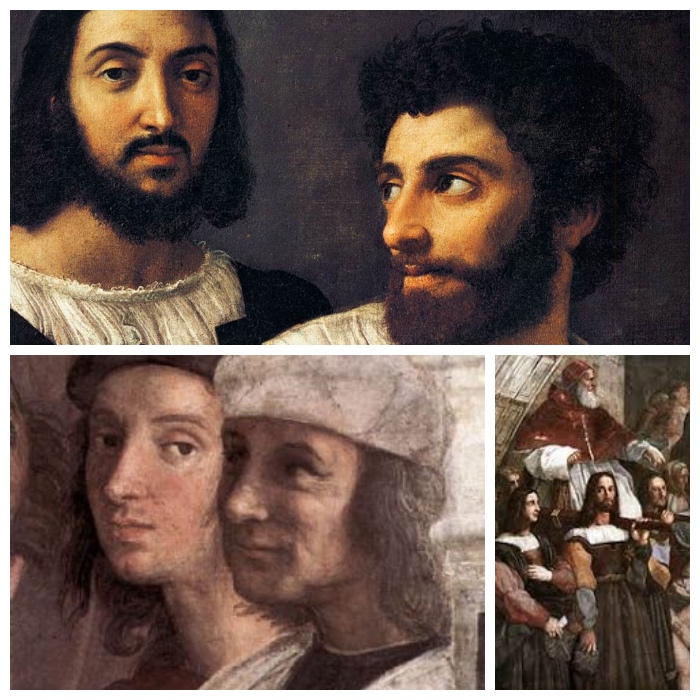
SELF-PORTRAIT BY RAPHAEL: DESCRIPTION AND CURIOSITIES ABOUT A MASTERPIECE
I’ve often been before the Self-Portrait by Raphael, never in the city housing it (Florence) but always on the occasion of exhibitions of various kinds.
This self-portrait is charming and Raphael’s look is the sweetest you can imagine.
In this post I’ll analyze the work and describe this painting, also thanks to some curiosities, but I’ll also make a list of all works where Raphael painted his self-portrait.
Self-Portrait by Raphael

Self-Portrait by Raphael in Florence (Room of Saturn, Pitti Palace)
SELF-PORTRAIT BY RAPHAEL: HISTORY AND ANALYSIS
The Self-Portrait by Raphael has often provoked many debates among art historians because not all have agreed that this is a painting by Raphael.
Raphael would have painted this self-portrait in Florence, and it has always been a model for many artists over the centuries, and an object of their admiration.
The artist’s face looks at the spectator, but his chest is slightly turned; the dark dress and the black hat are typical of the painters of the time of Raphael (Perugino did a self-portrait dressed in a similar way, too); the aspect is similar to the Self-Portrait by Raphael in the fresco “The School of Athens” housed in the Palace of the Vatican.
SELF-PORTRAIT BY RAPHAEL: WHERE IT IS HOUSED
The famous painting by Raphael, executed in the early 16th century, has been part of the Uffizi Gallery art collections since the 17th century, and is on display at the Uffizi Gallery.
However, the work is now on display at the Palazzo Pitti, until the staging halls of the Uffizi Gallery dedicated to Raphael are ready.
However, the painting is often on loan for various exhibitions arranged around the world, so you might not see it in Florence when you decide to visit the city.
READ ALSO- Raphael, the life and the works. 5 things to know
SELF-PORTRAIT BY RAPHAEL: THE COPY MADE BY INGRES AND HOUSED AT THE UFFIZI GALLERY
Many artists made a copy of the Self-Portrait by Raphael.
Among them, a very important copy was painted by Jean-Auguste-Dominique Ingres between 1820 and 1824.
The painting is now housed at the Ingres Museum (Musée Ingres) in Montauban, according to the artist’s wishes who wrote in his last will that the painting had to be placed in the museum of the city where he was born, together with the portraits of his parents.
ALL SELF-PORTRAITS BY RAPHAEL
Raphael liked painting himself in his works.
Here is where you can find the Self-Portrait by Raphael in his masterpieces.
The School of Athens in the Stanza della Segnatura (Room of the Signatura) in the Palace of the Vatican – Raphael depicted himself on the right side, next to Sodom, one of the artists whom he worked together with to decorate the Stanze (Rooms) for Pope Julius II.
The Expulsion of Heliodorus from the Temple in the Stanza di Eliodoro (Room of Heliodorus) in the Palace of the Vatican – Raphael is near the Pope, on the left.
Self-Portrait with a friend housed at the Louvre Museum- Raphael painted himself together with a friend, maybe his fencing master, while putting a hand on his master’s shoulder.

Self-Portraits by Raphael. Top image “Self-Portrait with a friend”; on the bottom left “The School of Athens”; on the bottom right the “The Expulsion of Heliodorus “.
READ ALSO – The Uffizi Gallery: works, tickets, history and everything you should know


Buongiorno, a chi posso inviare una mia valutazione iconografica sulla “Causarum cognitio”, che colloca Raffaello laddove mai nessuno l’ha sinora individuato?
Scrivi una mail alla reazione. L’indirizzo lo trovi nei contatti: https://www.theartpostblog.com/contatti/
l’ auoritratto di Raffaello mi fa un’po impressione perchè ci fissa con i suoi occhi ,ma mi piace vederlo perchè è bello .
confermo che l’ immagine di Raffaello sia stato dipinto dallo stesso Raffaello
e basta discussioni .
Grazie per il tuo commento 🙂